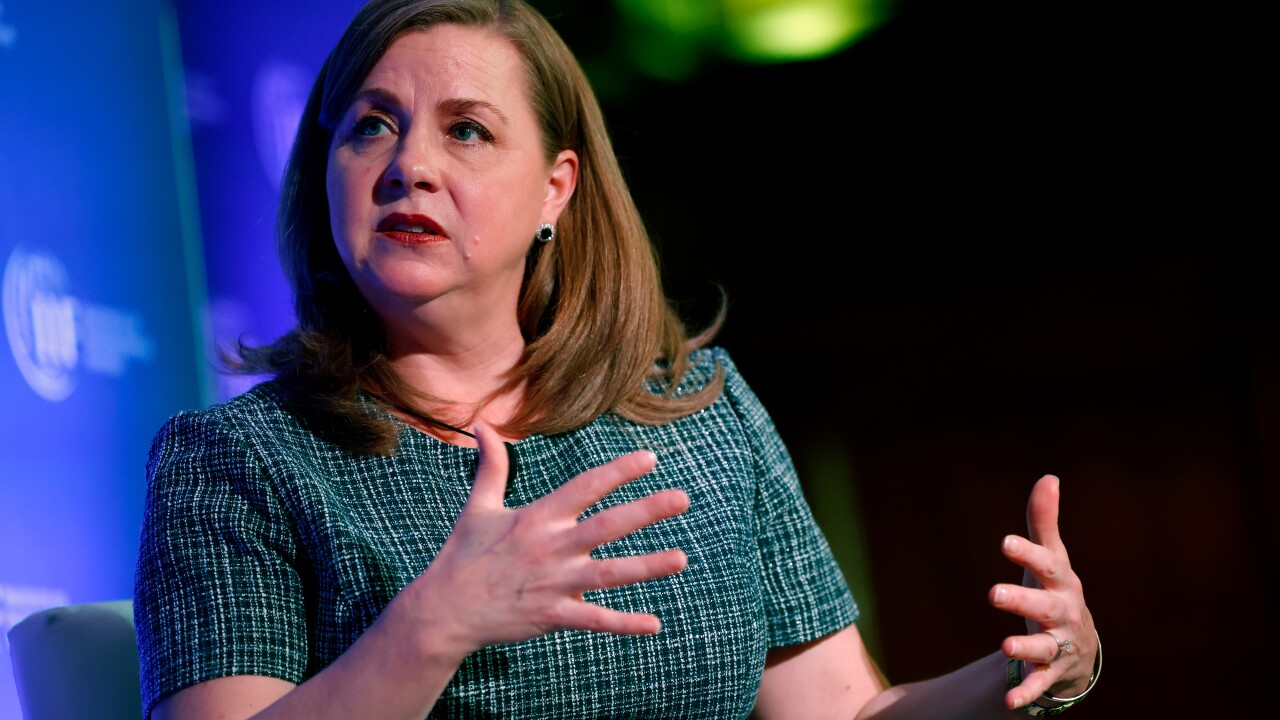-
The race for the exits is intensifying among big banks that purchase mortgages from correspondent lenders, creating liquidity issues for loan originators and radically reshaping mortgage servicing.
January 30

The Federal Home Loan banks are picking up where some of the nation's largest correspondent lenders left off.
Six Federal Home Loan banks have been dramatically increasing purchases of home loans from their member banks and are selling the loans to Fannie Mae, filling the gap created by large aggregators like Bank of America (BAC)
So far this year, the Federal Home Loan Banks of Chicago, Boston, Des Moines, New York, Pittsburgh and Topeka have purchased $13 billion of loans from member banks, almost double what they purchased in all of 2011. Nearly 800 banks are now participating in the program, up 15% from a year ago.
The income from the so-called Mortgage Partnership Finance Program, though modest, is enough to cover the program's costs. More notably, the program provides a crucial service to member banks that want to continue to make home loans, says Eric Schambow, a senior vice president and director of the Mortgage Partnership Finance program at the Federal Home Loan Bank of Chicago.
"We really want 30-year fixed-rate mortgages to be available at community banks at a competitive price," says Schambow. "Our role is as an aggregator and our price point is just as good as selling directly to Fannie."
The Mortgage Partnership Finance Program has been around for 15 years, but its focus is vastly different from what it was at its inception, when it sought to compete with Fannie and Freddie Mac for customers. The shift toward partnering with Fannie began in 2008, but only took off this year as large
B of A and Ally have shuttered their correspondent lending units due, in part, to Basel III capital requirements and a desire to streamline operations, while MetLife has exited mortgage lending altogether.
The result is that community banks are flocking to the Home Loan banks because it allows them to take part in the current refinancing boom, offer interest rates that are competitive with large banks and offload the interest rate and prepayment risk to the Home Loan banks.
"There was a vacuum because the aggregators got out and banks were looking for a place to go," says John von Seggern, president and CEO of the Council of Federal Home Loan Banks, a trade group. "Community banks now have a real chance to get back into the mortgage market."
When the Mortgage Partnership Finance program first started 15 years ago, the initial idea was for the Home Loan banks to buy loans from member banks and compete directly against Fannie and Freddie. A key differentiator was that while banks pay Fannie and Freddie to take over a loan, Home Loan banks paid member banks a credit enhancement fee, typically between 7 and 10 basis points a year based on the unpaid principal balance of the loan, for retaining a share of the credit risk.
"The big picture concept was that the actual lender making the credit decision should retain skin in the game, and the portfolios would have better credit performance," says Alex Pollock, a resident fellow at the American Enterprise Institute, who designed the program in 1997 when he was president and CEO of the Chicago Home Loan Bank.
The program initially was a huge success and funding ballooned to $71 billion in 2003. But it hit a snag when the Home Loan banks were denied securitization authority by their regulator and had to restrict access to the program by large banks. Three years later, funding had plummeted 95% to $3.4 billion.
By 2008, some community banks had pulled back on originating single-family mortgages and Schambow saw an opportunity to level the playing field with large banks by partnering with Fannie. The Chicago bank had created MPF Xtra, a loan product sold directly to Fannie, and began offering training and webinars to its members and other Home Loan banks. The Boston, Des Moines, Pittsburgh and Topeka banks now offer Xtra. The FHLB of New York still offers risk-sharing, credit-enhanced products but not Xtra.
A majority of community banks, thrifts and credits participating in the mortgage program hold less than $1 billion in total assets.
Some bankers say they feel more comfortable dealing with their Federal Home Loan Bank than selling directly to Fannie.
"Have you ever tried to call Fannie Mae?" asked Tammy McKenzie, a vice president at $129 million-asset Bank of Quincy in Quincy, Ill. "It doesn't work out so well. With the FHLB, we already have a relationship with them, and some I feel like I've known them my whole life."
Small community lenders also say they get better pricing through the Home Loan banks. Small banks do not have sufficient volumes to qualify for discounts on guarantee fees charged by Fannie Mae to protect against credit losses.
"The FHLB gets volume pricing that small community banks couldn't get, which is a huge benefit that lets us compete on rates against big lenders," McKenzie says.
Dan Ravenscroft, a regional vice president at $311 million-asset Royal Bank in Elroy, Wis., says the Mortgage Partnership Finance program also allows small banks to retain mortgage servicing so they can have more control over the customer relationship.
Community banks can retain servicing or can work with two servicers approved for the program: Colonial Savings in Fort Worth, Texas, and Prospect Mortgage, in Sherman Oaks, Calif.
"The idea that a community bank can retain servicing means a lot to customers and brings value to the bank because the customer can always pick up the phone and call the banker that closed their loan," Ravenscroft says.




